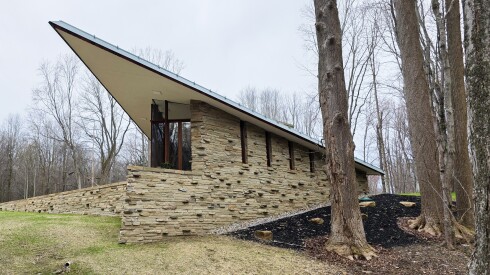Art and Culture in Lisbon
Lisbon is rich in art and culture. Visit palaces and the cathedral, and hear concerts in gardens and live music in bars. Enjoy art galleries and the colorful tiles at Museu Nacional do Azulejo. (Note that many Lisbon museums are free on Sundays till 2 p.m.) Art can also be found in the streets or parking lots, where the walls are covered with street art. Lisbon’s cultural offerings are many.
Bars + Nightlife
Largo São Domingos 8, 1100-201 Lisboa, Portugal
A Ginjinha was the first establishment in Lisbon to commercialize the drink called Ginjinha. Ginjinha is a liqueur made with ginja berries, aguardiente (Portuguese brandy), sugar, water, and cinnamon. Francisco Espinheira, a Galician friar of the Church of Santo Antonio, put together all these ingredients, and the result was this sweet and very good liqueur. In Óbidos, the drink is served in chocolate cups, about the size of shot glasses. (They make a very nice gift.) You can eat the cup after drinking the liqueur, or just pour more into the cup. Before having a drink, visit São Domingos Church. It’s worthwhile.
Campo de Santa Clara, 1100-471 Lisboa, Portugal
In the 20th century, the Church of Santa Engrácia was converted into the national pantheon, in which important Portuguese personalities are buried. The first stone of the present building was placed in 1682; it was the first baroque-style building in the country. The work lasted so long that it gave rise to the popular expression “works of Santa Engrácia” to designate something that never ends. It took 284 years to complete the church, finally finished in the year 1966. Inside you will find the interior paved in colored marble, and outside you can’t miss the giant dome. There is a terrace at the top—you only have to climb 187 steps—but then you can enjoy the wonderful view over the river and the city itself. Among the illustrious personages buried here is the famous fado singer Amália Rodrigues. Sundays and public holidays are free until 2pm. To get there, take Bus 734 (at Martim Moniz) or Tram 28.
Praça do Comércio, 1100-148 Lisboa, Portugal
Located right on the river, Lisbon’s massive main square is home to a plethora of gorgeous 18th-century architecture, all built after the devastating 1755 earthquake. Its canary-yellow facades and mosaic-like cobblestones come together to form one of Europe’s most picturesque plazas; it’s hard to believe that, as recently as the 1980s, the square was used as a parking lot (photos from those days, which you can see at the nearby Lisboa Story Centre, are astonishing). For the best views, pay the €2.50 (around $3) to access the terrace of the triumphant Arco da Rua Augusta and gaze out over the square, the riverfront, and the São Jorge Castle beyond.
Largo Ajuda 1349-021, 1300 Lisboa, Portugal
This royal palace was probably much-visited this year, due to an exhibition of Joana Vasconcelos, a very important Portuguese artist. The palace was built on a hill, after being destroyed at its the previous location (in front of the river) in the 1755 earthquake. But it wasn’t finished, because the royal family fled to Brazil during the French invasion. In 1968, it opened as a museum, with important collections of decorative arts of the 18th and 19th centuries, such as furniture, jewelry, textiles, painting, ceramics, photography, and sculpture. Many important state ceremonies take place here as well.
R. Me. Deus 4, 1900-312 Lisboa, Portugal
Azulejos (glazed tiles) are a ubiquitous decoration throughout Portugal. They cover the facades and interiors of many houses in Lisbon, and are even used as historical markers. The Museu Nacional do Azulejo, located in a 16th-century convent, has a permanent exhibition that illustrates the heritage of these Portuguese tiles from the 16th century to the present, touching on everything from Ottoman geometry to Goan altars. Also on view here is a remarkable azulejo mural, A Grande Vista de Lisboa, which offers an idea of what the city looked like before the earthquake of 1755.
R. Barata Salgueiro 39, 1250-044 Lisboa, Portugal
Founded in the early 1950s by European film archive pioneer Manoel Ribeiro, this museum’s mission is to safeguard film heritage. In the Cupid Room is an exhibit of Magic Lanterns, an apparatus for projecting images onto glass painted in translucent colors. Also there are several collections of sound, lighting, video, decorative objects, and pre-cinema devices. Indie film festivals take place here too. In the bookshop you can find not only film books but also DVDs. And on the same floor, on a nice terrace, you’ll find a restaurant.
45A Avenida de Berna
Museu Calouste Gulbenkian’s heroic collection of Eastern and Western art is nearly incomparable in Europe. Hidden away in a complex inside leafy Gulbenkian Park, the museum is a chronological treasure trove of epic art that spans ancient Egypt, Mesopotamia, the Qing dynasty, and the Roman Empire, among others. In August, the institution throws Lisbon’s premier jazz concert series, Jazz em Agosto—meaning that once you’ve had your fill of Egyptian mummy masks, fascinating Roman gold medallions, and René Lalique’s unearthly dragonfly brooch, you can chill on the expansive lawn for a little live music.
Praça do Império, 1449-003 Lisboa, Portugal
Back in 1992, Portugal hosted the Presidency of the European Union, which was the reason for building this center that nowadays holds conferences and professional meetings. It is also a cultural center, with three rooms of different sizes equipped to host theater, dance, jazz, opera, film, and classical music concerts. Speaking of classical music, a festival called “Dias da Música” lasts a whole weekend and is the biggest annual event taking place here. But there is more. You’ll find art at Berardo Museum of Modern and Contemporary Art, and stores in the building include a bookshop and a Portuguese-design shop. And for dining, you have a restaurant/café with a terrace outside overlooking the river.

















